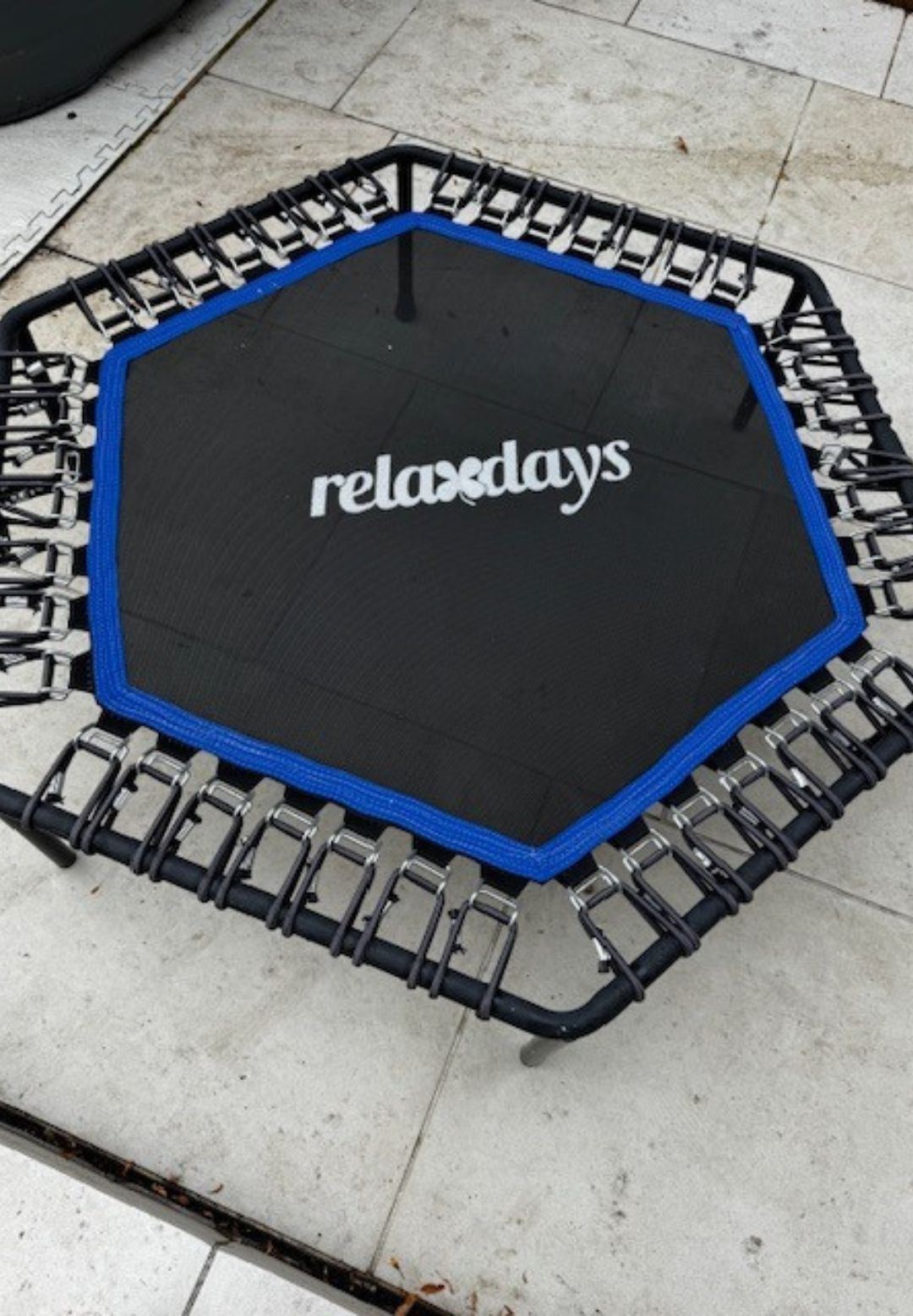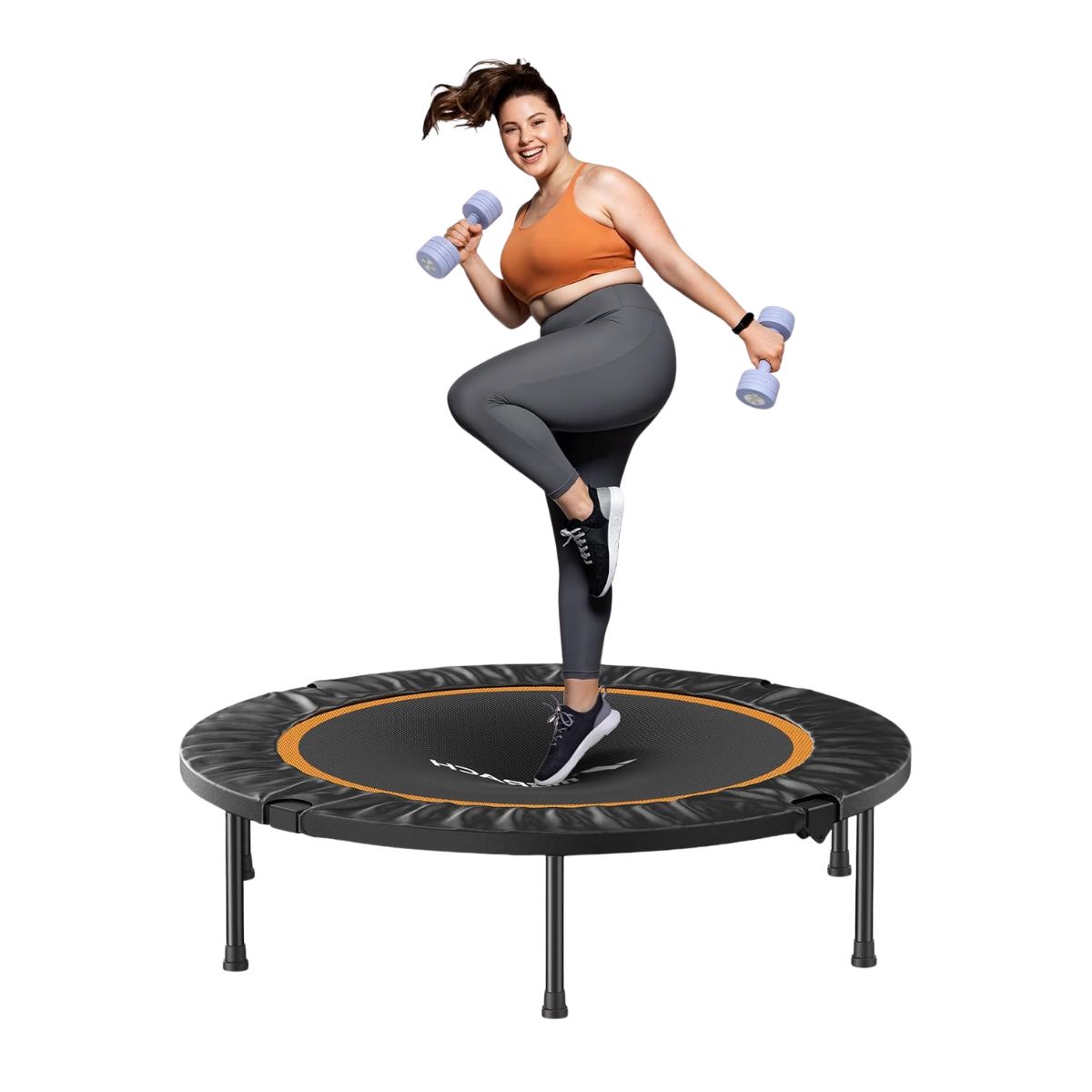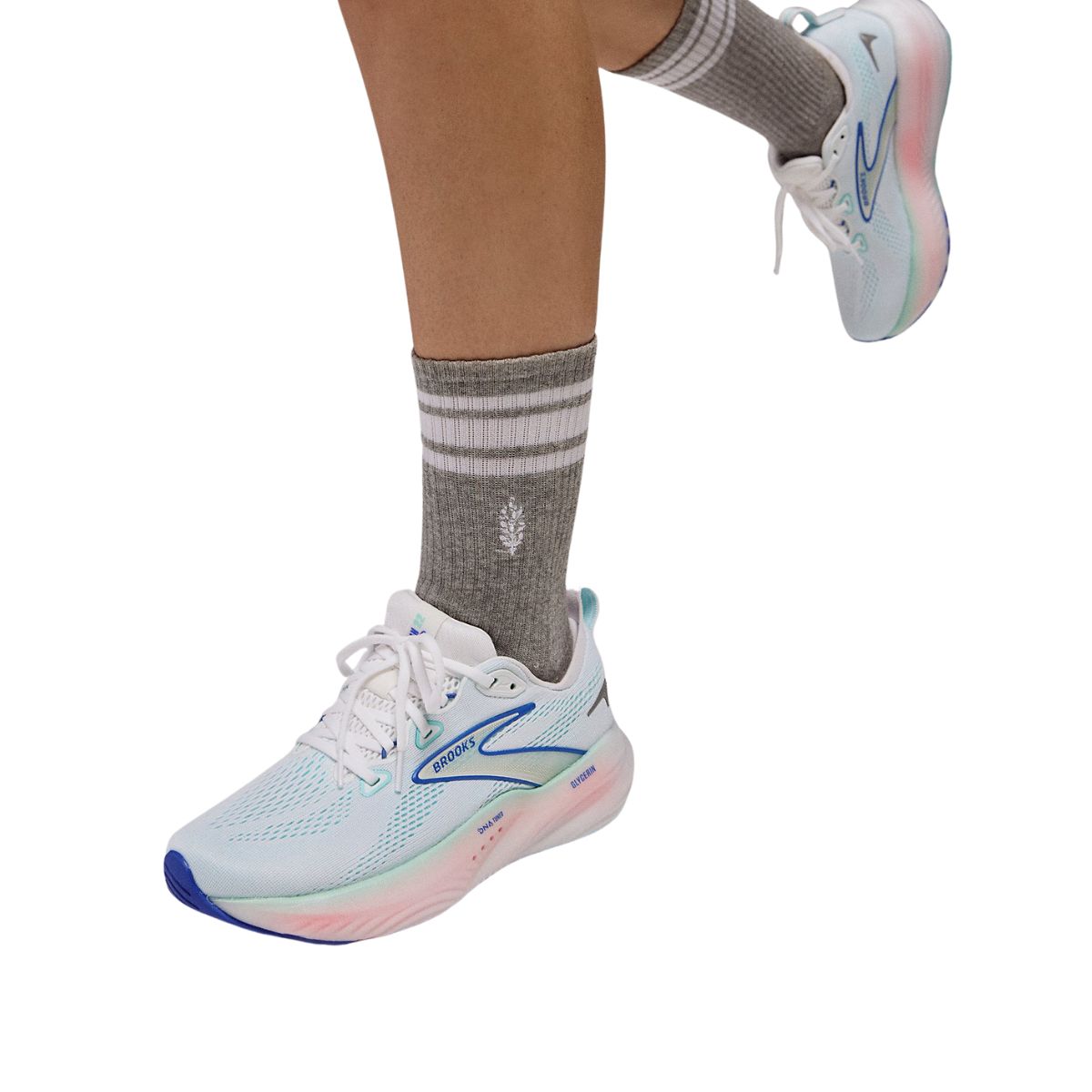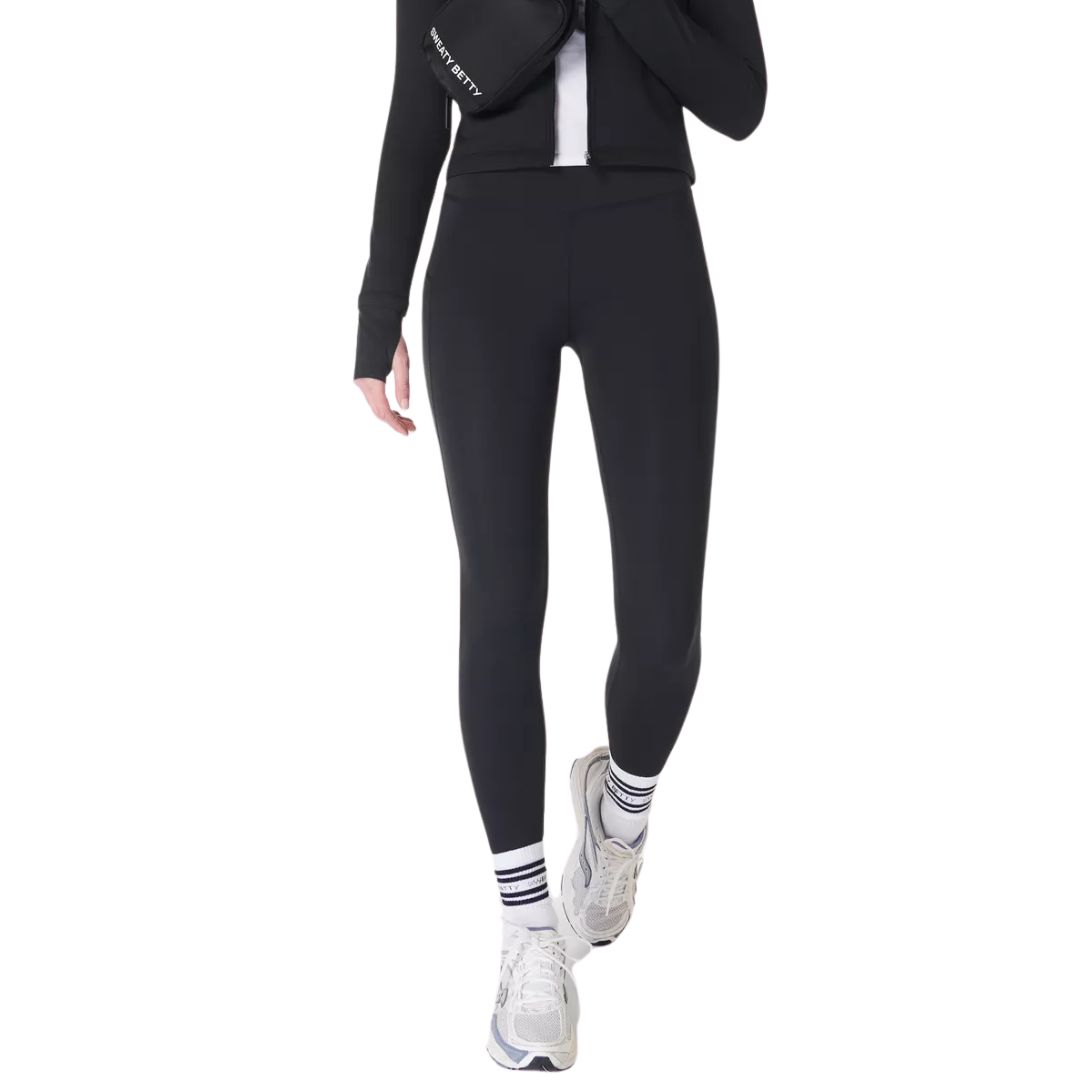Hate Running? Rebounding Has Gone Viral for Being a More Effective Form of Cardio – so I Tried It for a Week
Unleash your inner Tigger.


Fancy making your summer fitness a bit more fun? Then you're going to love this trend. Rebounding is the latest workout taking our socials by storm - and no, we're not talking about your ex moving on faster than you can say red flag.
Not least because the trend comes with some impressive endorsement: a 1980 NASA-led research study (published here, in the Journal of Applied Psychology) found that just ten minutes of rebounding per day was more effective (up to 68%) than 30 minutes of jogging, when looking at oxygen uptake and heart rate.
Now, it's no secret that Team MC UK are low-key obsessed with running (our Senior Health Editor Ally is a 9x marathoner, not to mention a Boston-qualifying runner), so we don't take these claims lightly - meaning I had to try rebounding out.
Never heard of it? The premise is delightfully simple: it's essentially bouncing on a mini trampoline. Keep scrolling to find out how I got on, but in the meantime, don't miss our guides to how to run a mile without stopping, how to run faster, and our favourite running tips for beginners, here. Rather hit your cardio quota the bouncy way? Don't miss our round up of the best workouts on a mini trampoline, here.
Rebounding is being hailed as more effective than running - so I tried it for a week
What is rebounding?
As touched on above, rebounding really couldn't be any simpler. Loved your childhood summers bouncing for hours on a trampoline? Rebounding will be right up your street. A low-impact yet highly effective cardio workout, you'll simply need a mini trampoline, also known as a rebounder.
"Rebounding is exercising on a mini-trampoline or rebounder," explains personal trainer Emma McCaffrey. "It involves bounces, jumps, and structured exercises performed on the springy surface."
Easy, right?
Celebrity news, beauty, fashion advice, and fascinating features, delivered straight to your inbox!
Why is rebounding having a moment right now?
You'd be forgiven for thinking that you'd left your trampolining days well behind you, but the internet begs to differ. Scroll for a moment on TikTok and you'll come across a plethora of rebounding reels with thousands upon thousands of views - and the A-list are jumping on the trend too (sorry!), with celebs such as Eva Longoria, Madonna and Gwyneth Paltrow rumoured to be fans.
So, why the sudden interest when the study we're talking about is almost half a century old? Well, there are a number of advantages to the activity that make it particularly suitable for our frenetic, modern lifestyles. It's effective, efficient and great for those of us who are time-poor (summer holiday juggle, anyone?)
It's also super fun, low-impact and joint-friendly, making it suitable for pretty much everyone, from kids to older adults, too.
What are the benefits of rebounding?
You'll have gleaned if you've got this far that rebounding has some seriously impressive benefits (if it's good enough for NASA, right?) So, let's jump into the details.
1. It's joint-friendly
While it's no secret that running is a fantastic way to improve fitness and cardiovascular health, there's no doubt that it can stress our joints, particularly as we age.
Not so, rebounding, which is the ultimate low-impact activity. "It's super gentle on your joints, including knees, ankles and hips," notes McCaffrey. "The rebounder absorbs your impact, making it ideal for people with joint pain or those recovering from injuries (although always check with your GP first)."
2. It's great for cardiovascular fitness
It might be low-impact, but rebounding for any length of time offers an impressive cardio workout - your heart will be pumping before you know it.
"The benefits of rebounding are extensive and go beyond what you might expect from a mini trampoline," shares Rowan Clift, training and nutrition specialist at AI-based fitness and lifestyle coaching app Freeletics. "Rebounding is a powerful cardiovascular workout that strengthens the heart and lungs for an excellent fitness boost."
As for the benefits of a strong heart and lungs, we're sure you won't need us to point them out, but in case you missed it, studies consistently show that cardiovascular fitness is associated with a reduced risk of developing diseases such as cancer, heart disease, stroke and diabetes, not to mention improved mental health outcomes, too.
3. It boosts lymphatic drainage
So, this is a benefit we don't talk about much when it comes to workouts, but rebounding is purported to improve lymphatic drainage. Put simply, our lymphatic system is part of the immune system and works to protect us from infection and disease via lymph nodes and vessels. It does this by 'cleaning' and removing dead and damaged cells from the body, and bouncing is thought to enhance this process.
"The rhythmic bouncing of rebounding helps stimulate the lymphatic system, which is important for immune function and detoxification," agrees Clift.
4. It improves balance and co-ordination
"Research has shown that rebounding has been highly effective in improving functional mobility, balance and coordination, particularly in older adults over 50," notes James Bickerstaff, personal trainer at OriGym. "To maximise this, try to keep your bounces controlled and steady. Don’t focus on how high you can jump, instead focus on slow and deliberate movements, in some instances your feet may not even leave the surface of the trampoline."
5. It improves bone density
Particularly important as we age and become susceptible to decreasing bone density (osteopenia), it's vital for women to engage in weight-bearing activities such as rebounding as we head into peri and menopause.
"The repetitive, controlled impact of rebounding can also enhance bone density, which is particularly important in preventing age-related bone loss," shares Clift.
6. It's a full body workout
"Because the trampoline surface is elastic and unstable, every movement requires balance and coordination, activating the core and stabilising muscles throughout the body," notes Clift. " While it may appear simple, it’s a highly functional workout that uses the principles of gravity, acceleration, and deceleration to engage multiple muscle groups for a full-body workout."
Who is rebounding best for?
A huge advantage of rebounding is its accessibility.
"Rebounding is a really versatile way to workout, and it’s accessible to a wide range of individuals," says Clift. "For beginners, it’s a friendly and approachable way to get moving, especially for those who may find traditional forms of cardio intimidating or uncomfortable.
"It’s also ideal for people with busy schedules, as it can be done at home and in short bursts. Those recovering from injury or dealing with joint pain often find rebounding a safer, more manageable alternative to high-impact exercises like running or jumping on hard surfaces.
"Athletes can use it as a tool for active recovery or as part of their warm-up to improve coordination and endurance. Older adults benefit from the balance and stability gains, which can help reduce the risk of falls."
I tried NASA-approved rebounding for a week - here are my honest thoughts

Day one of her rebounding challenge and Anna was raring to go
Days one to three
By now, I'm well-acquainted with the purported benefits of rebounding, so, mini trampoline borrowed from a friend, I'm excited to get started.
As is my usual style, I (quite literally) jump straight in and get going, but if you're more of a planner than I am, rest assured that there are loads of rebounder workouts online for you to bounce along with without spending a penny (once you've got your trampoline!)
My initial worries over how well my (frankly disastrous) pelvic floor would hold up to the challenge proved unfounded, as I managed a good ten-minute jump without so much as a dribble - a huge win, for me.
That said, I do find it more challenging than anticipated. I'd (wrongly) assumed that, as a relatively fit and healthy person, I'd breeze through the session without breaking a sweat: reader, I was wrong. It takes less than five minutes for my heart rate to soar and the sweat to start - but, as a lover of high-energy workouts, this is a huge bonus to me.
Since it's the summer holidays and time is of the essence for me, I stick to a 10-minute bounce for the first few days. And I'll level with you: I did get a little bit bored. You're essentially stuck in position, and while I did try varying my movements from heel digs to twists and more, you are somewhat limited in what you can do.

Anna found rebounding more difficult than anticipated - but loved the challenge
Days four to seven
So, in an attempt to boost my waning interest, I try following along with an online class, and am surprised (and delighted) to find that the rebounder isn't limited to simply bouncing - it's great for core work, too. The unstable base works my midriff harder than the same moves on the floor, and I love working deep into those all-important stabilising muscles. Note to self: it's always good to mix things up.
Trying the online classes provided a really different vibe to just bouncing along on my own in my garden (you can obviously use the rebounder inside, but I love exercising outdoors), and I'd definitely recommend finding an instructor you like, for keeping you motivated throughout the session.
Did I notice any improvements in my fitness? Truth be told, it's difficult to tell after just one week - I'd say that you'd need to practice consistently over a month or more to really notice fitness gains. That said, I do feel more balanced and stable generally on the rebounder towards the end of the week, and I certainly feel like I've given my cardiovascular system a boost.
As for whether it's as good as running, I'd say the two are completely different. I love the repetitive, calming nature of running, and to some extent, rebounding also delivers on this point. But more than this, I love a run for clearing my head and getting out of the house - something I haven't been able to recreate in any other activity.
For me, I'll choose a run over rebounding any day of the week, but I can totally see why those who aren't fans of a humble jog could gain similar mental and physical benefits from bouncing. Personally, though, I'm sticking to my weekly run.

The mini trampoline that Anna used during her rebounding challenge
Shop MC UK's must-have rebounding fit kit now:
Is rebounding really as effective as running?
"The idea that NASA considers rebounding better than running comes from a study where researchers compared the effects of trampoline exercise to treadmill running," explains Clift. "They found that rebounding generated more biomechanical stimuli, meaning greater g-force on the body, while putting less stress on the joints. In other words, the muscles and bones were being stimulated more efficiently, without the same level of impact on the knees, hips, and ankles that running typically causes. This makes rebounding highly effective, especially for those looking to build endurance, support joint health, or maintain a healthy weight with minimal risk of injury.
"However, whether it’s better depends on the individual and their goals. For someone training for a marathon or looking to improve running performance specifically, traditional running is still necessary. But for general fitness, rebounding can be just as, if not more effective than running, particularly when it comes to safety, versatility, and long-term sustainability."

Anna Bartter is a freelance journalist who writes about health, fitness and women's lifestyle for publications including Stylist, Metro and Psychologies, among others.
She's always on a quest to find a variety of fun and functional workouts that give you the most bang for your workout buck and she's passionate about championing movement for everyone's mental and physical wellbeing.


